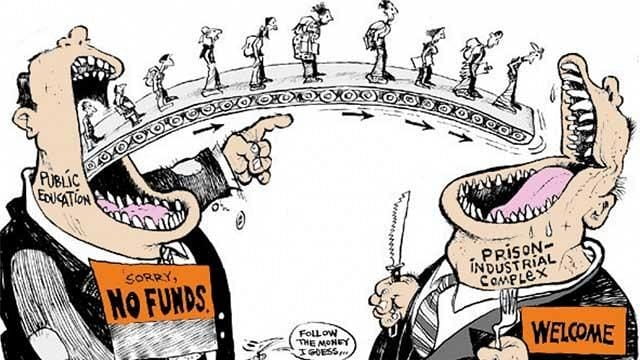The problem with privatising prisons
First, what is the difference between a private prison and a public prison? The main difference comes down to money; “a private prison, or for-profit prison, is a place where people are imprisoned by a third party that is contracted by a government agency”.
The UK, United States, New Zealand and Australia are some of only a handful of countries which allow prisons as such. In the UK, Wolds Prison in Yorkshire became the first modern European prison to be privatized. The number of private prisons in the UK is now 14, which totals to a higher percentage of privatized prisons than the US. They house 15% of our prison population, whereas figures in the US are approximately 8%.

In theory, privatizing prisons is a solution to a difficult issue- too many prisoners, not enough prisons, since the public sector is unwilling to build more. Therefore, private companies step in and earn a revenue per prisoners to maintain and run facilities, minimising government waste, whilst increasing the capacity of the facilities.
However, the theory is often criticised and is viewed to have been translated poorly into practise. Although corporations running these institutions claim they’re saving government money, inevitably their true focus is protecting themselves. Private companies running these prisons aim for around 8-10% profit margin, meaning more money for themselves, and less for the prison. In the UK, the government spends 23% of its prison budget on private prisons, which appears counterproductive and seems to be hardly achieving the aim of saving government spending. In order to decrease operating costs, corners are cut, hiring fewer employees, training them less and paying them a lower salary. Employees in US private prisons on average earn over $5000 less per year than public prison employees (23% lower) and receive 58 hours fewer in training. Consequently, staff turnover rate is significantly higher than in its public counterparts, showing the constant flow of inexperience in a high-pressure environment. This also results in decreased security- a report from 2016 from The Justice Department found inmate on inmate assaults were 28% higher, as well as the fact inmate on staff assaults occurred twice as much, along with two times more forbidden weapons found than in federal facilities.
To add to this, the same report concluded that the Bureau of Prison’s monitors in charge of ensuring prisons comply with federal policies regularly failed to make sure inmates were receiving medical care. One prison went without a full-time doctor for multiple months, a fact that the monitors failed to report. The lack of sufficient security and less than adequate healthcare unnecessarily and unfairly endangers inmates who are not in a position to do anything about it.
In the HMP Birmingham prison, riots frequently occurred during 2016; but in 2017, the situation got even worse. Violence escalated and a heavy presence of drug use occurred. In September of 2017, disturbances led to one inmate being hospitalised, and over the period of 2017-2018, thirteen prisoners died as a result of the violence and drug use. In August 2018, the crisis at the Birmingham prison- which was described as “the worst prison he’d ever been to” by the Chief Inspector of Prisons- became so intense that the government took permanent ownership once again and terminated the contact with the corporation. This is a clear demonstration of privatisation failing our prisons.
Another reason these facilities are criticised is that the corporations running them earn their profit by imprisoning offenders and will go to extreme lengths to preserve this profit. One notorious example of this is the 2009 “Kids for Cash” scandal, in which it was uncovered that two judges in Pennsylvania had been accepting money from the owner of two private juvenile detention centres, trading for sentencing juvenile offenders to time in those centres. Minors were sentenced to time in these centres for committing crimes like shoplifting DVDs or failing to attend hearings which they were never notified of.
Overall, private prisons have no real incentive to rehabilitate or help prisoners- if they make their profit from criminal society, why would they try and reduce it? IT goes against all business sense. Private companies shouldn’t be responsible for the detention and discipline of members of society; especially when well-being clearly isn’t their primary concern. Security and healthcare at the expense of cost cutting can have disastrous and potentially life-threatening effects for civilians. A private prison in Ohio saw thirteen stabbings, two murders, and six escapes in in initial 13 months- how can it be proven that privatising prisons improves the scheme or institutions at all?
Nayana Mould, Year 12.